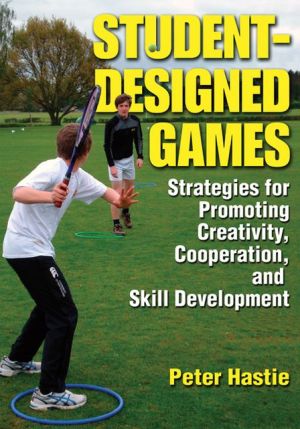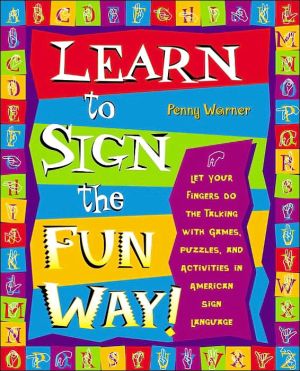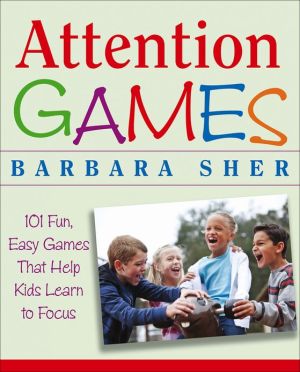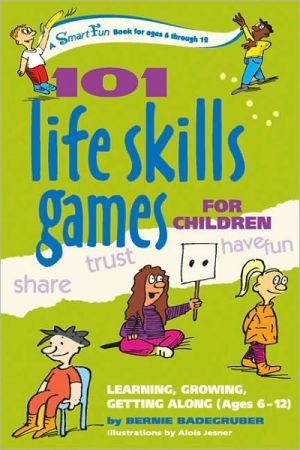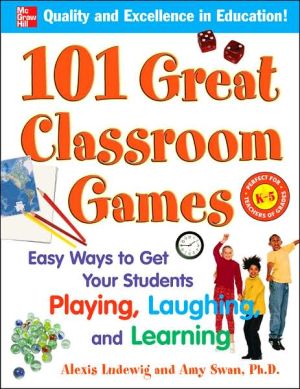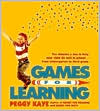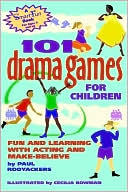Student-Designed Games: Strategies for Promoting Creativity, Cooperaton, and Skill Development
Students love games, but unfortunately, games are often taught in ways that alienate or exclude less-skilled students. Or worse yet, students find the games boring because they have no voice in how the games are played.\ Student-Designed Games: Strategies for Promoting Creativity, Cooperation, and Skill Development helps teachers and youth leaders make games fun again. This innovative, step-by-step guide helps students from early elementary school through college design their own games. In...
Search in google:
Student-Designed Games: Strategies for Promoting Creativity, Cooperation, and Skill Development guides teachers and students in devising games that are inclusive, creative, educational, and fun. Students can adapt games they already play or create new ones with templates. It includes assessments and rubrics, and it outlines teaching strategies.
Part I: Getting StartedChapter 1. An Introduction to Student-Designed Games A Brief Theory of Student-Designed Games What Makes a Good Game? What Student-Designed Games Are Not Getting Started With Student-Designed Games ReferencesChapter 2. Educational Benefits of Student-Designed Games Games Making and the Physically Educated Person Games Making and Cooperative Learning Games Making and Student Motivation and Engagement Conclusion ReferencesChapter 3. Instructional Strategies for Games Making Choose Outcome Goals Decide Type of Game and Student Choice Set Up Small Learning Groups Present the Challenge Provide Time to Explore and Experiment Provide Time to Play Review The Role of the Teacher Conclusion ReferencesChapter 4. Understanding Games What Is a Game? Classifying Games Classifying Games According to Their Tactics Tag Games Target Games Invasion Games Striking and Fielding Games Net and Wall Games Conclusion ReferencesPart II: Designing Basic GamesChapter 5. Tag Games Key Principles of Tag Games Required Experiences for Success in Tag Games Key Strategies for Success in Tag Games Sample Tag Games Poor Tag Games Safety in Tag Games Questions to Consider When Designing Tag Games A Template for Designing Tag Games Conclusion ReferencesChapter 6. Target Games Key Principles of Target Games Required Experiences for Success in Target Games Key Strategies for Success in Target Games Sample Target Games Poor Target Games Safety in Target Games Questions to Consider When Designing Target Games A Template for Designing Target Games Conclusion ReferencesChapter 7. Invasion Games Key Principles of Invasion Games Required Experiences for Success in Invasion Games Key Strategies for Success in Invasion Games Sample Invasion Games Poor Invasion Games Safety in Invasion Games Questions to Consider When Designing Invasion Games A Template for Designing Invasion Games Conclusion ReferencesChapter 8. Striking and Fielding Games Key Principles of Striking and Fielding Games Required Experiences for Success in Striking and Fielding Games Key Strategies for Success in Striking and Fielding Games Sample Striking and Fielding Games Poor Striking and Fielding Games Safety in Striking and Fielding Games Questions to Consider When Designing Striking and Fielding Games A Template for Designing Striking and Fielding Games Conclusion ReferenceChapter 9. Net and Wall Games Key Principles of Net and Wall Games Required Experiences for Success in Net and Wall Games Key Strategies for Success in Net and Wall Games Sample Net and Wall Games Poor Net and Wall Games Safety in Net and Wall Games Questions to Consider When Designing Net and Wall Games A Template for Designing Net and Wall Games Conclusion ReferencesPart III: Moving Beyond Basic GamesChapter 10. Conversion Games Hybrid Games Relocation Games Transformation Games Conclusion ReferenceChapter 11. Cooperative Games Collective Scoring Reversal Games Components of Cooperative Games A Template for Designing Cooperative Games Conclusion ReferencesChapter 12. Assessment in Student-Designed Games What to Assess in Student-Designed Games How to Assess Student-Designed Games Evaluating Games Conclusion References
